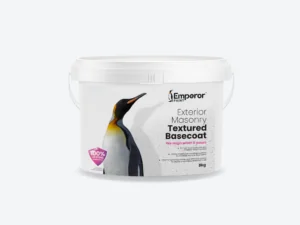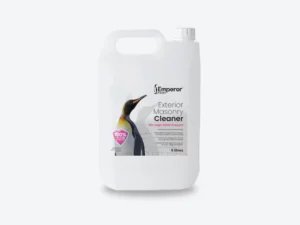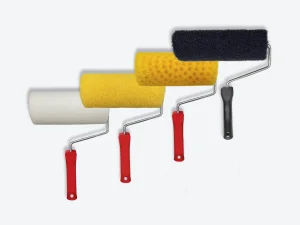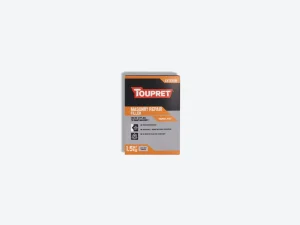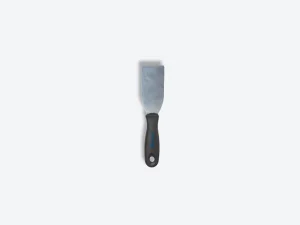How To Repair Cracked Walls & Prevent It Happening Again
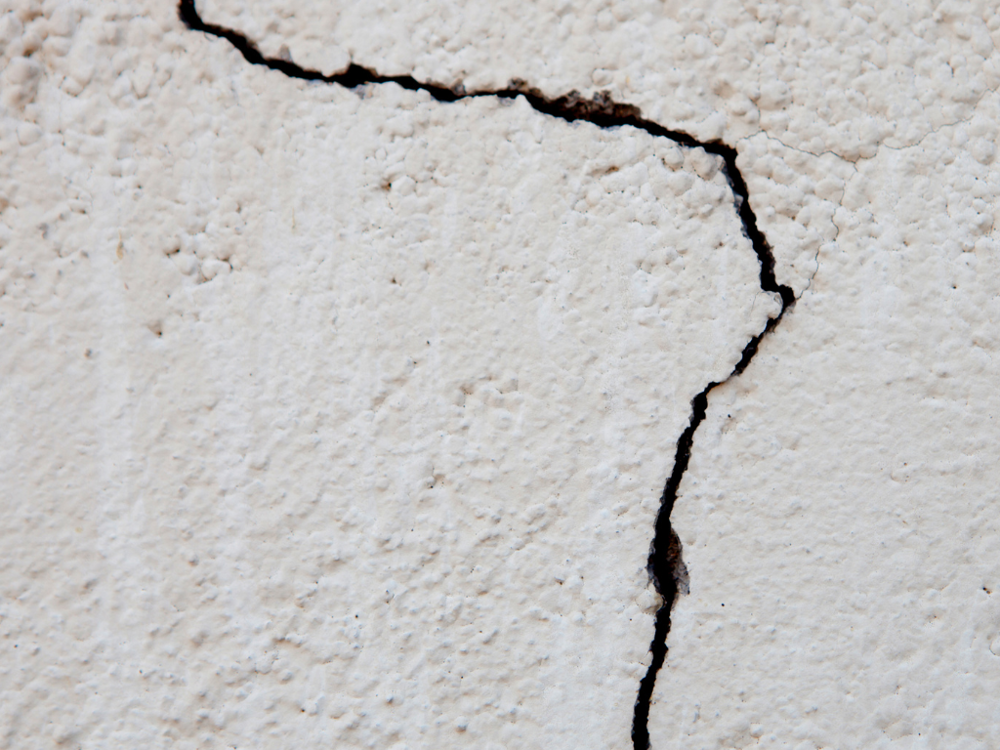
Cracked walls is a prevalent problem up and down the UK and is something that can cause quite a bit of worry, especially when they are on the outside of your home. In this guide we are going to cover everything you need about cracked exterior walls, how to repair cracked walls and how to prevent it from happening it in the future, so you can enjoy a beautiful, pristine home.
What Can Cause Walls To Crack?
As with any exterior surface, there are a number of factors that may cause exterior walls to crack over-time meaning it isn’t always a one size fits all solution. The most important thing is to establish the cause of the crack as early as possible in order to address the issue properly. There are three main reasons behind cracking exterior walls; settlement, thermal movement and moisture.
1. SETTLEMENT
Settlement is a common term you will come across when researching cracked walls. These can occur with new-build properties as the structure ‘settles’ as the building materials move after construction.
This is a process that newly constructed properties must go through as the foundations compact under the weight of the structure which eventually stops when the structure stabilises.
Similar to settlement, subsidence and heave are caused by the ground moving beneath but can occur with older properties. This movement is most commonly caused by the trees, defective drainage, weak ground and mining activity close to the property.
2. THERMAL MOVEMENT
Thermal movement can occur when changing environmental temperatures can lead to expansion and contraction of construction materials, resulting in cracks opening up.
Every building can expand and contract with temperature, moisture and humidity changes throughout the year with some buildings more susceptible than others due to less flexible materials having been used.
3. MOISTURE
One of the most common causes of cracked exterior walls is weathering, especially on rendered walls. Caused by either the wall absorbing wind-driven rain or by small hairline cracks allowing moisture to enter the surface, once in the wall it is only a matter of time before further damage is caused.
When the moisture within the wall undergoes a freeze-thaw-cycle, the water expands which causes movement within the exterior wall. This movement can lead to cracks opening up which then allows more moisture to enter the wall, causing even larger cracks and creating a cycle of damage.
This moisture and the cracking it can cause can be worsened by poor breathability, if a low breathability masonry paint or a brick sealer is used. If water vapour cannot naturally breathe through exterior walls it can become trapped, increasing the moisture level in the wall and contributing towards cracking.
Aside from this, cracks that appear on rendered surfaces come sometimes be caused by the render application process with water evaporating from the render too quickly. This can lead to not enough time being given for the render to bond effectively with the exterior wall before it dries, leading to cracks appearing in some cases.
Can I Repair A Cracked Wall Myself?
Before addressing the crack, it is important to note that repairing cracks is only recommended if the cracks are either a result of moisture or if the movement that is causing the cracks has stopped. If you are unsure, it is recommended to seek professional help to identify what the cause could be.
The size of the crack, how long they have been present and whether they are continuing to increase in size are all things to consider.
According to BRE, a leading organisation in building standards, cracks with widths up to 5mm can be regarded as ‘aesthetic’ issues that require only small redecoration. Cracks between 5mm and 25mm can generally be regarded as issues that impact the weather-tightness of a building that may require repointing and other larger repairs, while cracks larger than 25mm may indicate structural issues.
This assessment was carried out from 130 properties that suffered from subsidence. If your cracks have appeared on external finishes such as rendering and the brickwork beneath the render is still sound, this may indicate larger cracks are simply a failure of the external render and not structural issues. If you are unsure, contacting a professional is recommended.

How To Repair Cracked Walls
Cracked walls can be repaired if you take the correct steps. Here is our step-by-step process that will allow anyone to not only repair cracks but completely disguise them and restore your walls back to their original condition.
YOU WILL NEED:
- A mini-disk cutter or a masonry chisel
- Masonry filler
- Emperor Textured Basecoat (if required)
- A wire brush
- Sandpaper
- Filling knife
- Masonry cleaner
- Power washer (if possible)
1. IDENTIFY THE DAMAGE
As with any decorating project, accurately establishing what work needs to be carried out is the first port of call. In most cases, cracks can be repaired using an exterior masonry filler. If you have large open sections of render missing, you can use a render mix or alternatively use Emperor Textured Basecoat.
It is also important to ensure the other areas of the wall are still sound as the cracking may indicate further damage. If you have a bare brick wall, check the pointing is adequate and that there is no spalling bricks. If any other damage is present, this must be repaired.
On rendered walls, tap on the surface to check the render is sound. If you can hear that the surface is hollow, you must remove this as eventually this will completely fail if it isn’t fully repaired.

2. CLEAN THE SURFACE
Before you make any repairs to the wall, it is important to clean the surface. This firstly helps to dislodge any loose material, but is also crucial if painting the surface once repaired.
You can clean the wall using a hose-pipe, pressure washer (on a low pressure setting) or with a stiff brush and hot soapy water. This is the first stage of the cleaning process and ensures there is no surface level dirt.
The second stage of cleaning is to apply a suitable exterior masonry cleaning solution such as Emperor Exterior Cleaner that contains a fungicide. This will kill any organic growth that is present on the wall. Simply apply the cleaner to the surface and leave for a minimum of two hours.
3. OPEN UP CRACKS
While it may seem counter-productive, very small hairline cracks must be made larger in order to properly repair them. This is because these small cracks do not allow the filler to grip fully in order to fill the gap. The easiest way to open up cracks is to use a tool such as a mini-disk cutter, that you can run a cut through each crack. If you do not have access to this, you can use a masonry chisel to open up the crack. Once each crack is enlarged, you can then remove any dust from inside the crack using a brush.
Larger cracks do not need to be opened up. Simply remove any debris from the crack.
4. FILL THE CRACKS
You can use any suitable exterior masonry filler to repair cracks, either using a filling knife or an applicator gun. Using an applicator gun & a masonry filler that comes in a tube may be the best option if you have deep cracks, as this will allow you to apply the filler into the deepest part of the crack. An example of a good quality masonry filler is Toupret Masonry Repair Filler.
If using a filling knife, work the filler back and forth to ensure the defect is filled as much as possible. Slightly overfilling the crack can help counter any shrinkage as the filler dries.
Once the filler is dry, simply sand the surface down to achieve a smooth, flat surface. If you have a smooth render, try to sand the filler back to blend the repair in with the original surface.
If you are repairing natural brickwork and want to maintain that natural finish, repairing the surface as discretely as possible is recommended as you will be unable to disguise the repairs with a paint.
If you are unable to match the repair to the original surface, for example if you have a textured wall, there is another way to help blend the repair.
5. TEXTURED BASECOAT
With cracked render the newly repaired areas will often be visible one the surface is painted. This is because many exterior walls have a textured finish, from semi-smooth sand and cement renders to heavy roughcast and pebbledash.
Disguising the repairs you have made can be a difficult task, which is why we developed a cutting-edge textured basecoat to help mask these different textures to create one uniform textured finish.
Emperor Textured Basecoat is self-priming so bare, unpainted surfaces do not need to be primed first. Simply apply the basecoat directly to bare or previously painted walls. The basecoat is designed to be easily applied by anyone no matter the experience level. All you need is a textured roller and away you go.
There are three textured rollers to choose from, smooth, medium and rough texture. This allows you to create different textures depending on the surface you are trying to blend the cracks into.
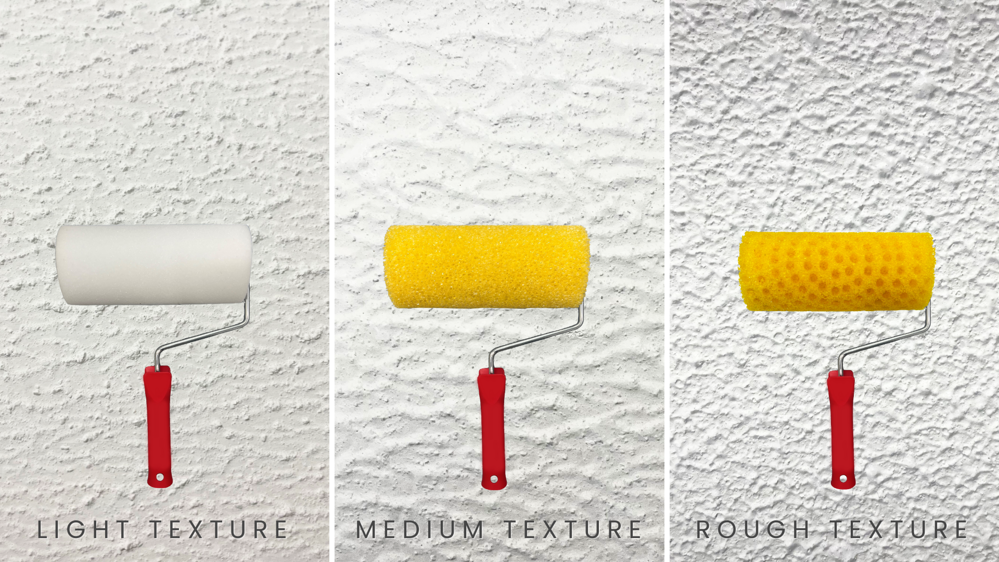
Start by loading the Emperor Textured Basecoat on to your chosen roller ensuring the full roller is covered with the basecoat.
You can then simply roll it on to the wall, avoiding rolling back over the same area too many times as this will smooth the texture you are creating.
Watch how quick and easy it is to apply Emperor Textured Basecoat.
The basecoat has a coverage of 350-500g per m², which will vary depending on the texture you are applying. Once applied, allow to dry for 24 hours at 20°C or slightly longer at lower temperatures. In contrast, a render repair can take up to 4 weeks to fully dry.
If you can’t achieve the level of texture you require on the first coat, you can apply a second coat which allows you to build-up the texture you have created and helps to fill deeper sections of missing render.
Leave the basecoat to dry for 24 hours and then paint directly with any masonry paint of your choice.
How To Prevent Cracked Walls Happening Again
As we have mentioned, cracking from thermal movement and settlement is often a temporary issue that can stop eventually.
You can minimise the impact of cracking by following a few simple steps.
- Heating and ventilation – with thermal movement being a key cause of cracking, try to keep a consistent temperature in your home and increase ventilation to allow moisture to escape.
- Trees and plants – avoiding planting trees and shrubs close to your home can ensure the roots cannot cause movement to your homes structure. This is particularly the case with trees that need a lot of water as these have very large roots that can cause problems.
If cracking has been caused by moisture and frost damage it is important to address this if you want to prevent further damage to your exterior walls. All mineral surfaces are porous, including brick, stone, concrete and the vast majority of renders. By ensuring they are sufficiently protected from water absorption, you help limit the risk that moisture causes deterioration of the surface.
While preventing water entering the wall, it is equally important to ensure moisture can escape through breathability. If you apply a low breathability product to the walls, this will simply trap moisture and exacerbate damage from moisture and can lead to damp problems.
To reduce moisture levels in your exterior walls, it is recommended to apply a product that prevents water absorption while also maintaining full breathability. Unfortunately, in the UK today modern standard masonry paints are not waterproof and do not have high breathability. Equally, sealers and other similar treatments waterproof walls by creating a waterproof film on the surface of exterior walls that can help reduce the amount of water entering the wall. As the name would suggest however, these seal the pores of the wall meaning they are not breathable and in fact can make moisture-related problems worse.
We developed a range of cutting-edge masonry treatments that create what is known as a ‘super hydrophobic‘ surface on exterior walls that cause water to form beads that simply roll off. This reduces water absorption by 96% and keeps your exterior walls dry.

While reducing the amount of water entering the wall, our treatments are highly breathable with SD breathability rating similar to limewash. This ensures water vapour can freely pass through exterior walls.
Not everyone wants the same finish on their home. While some people want a new, freshly painted finish others want to maintain the natural beauty of brickwork and masonry. For that reason, we developed two treatments that offer the same benefits but in two different finishes. Emperor Masonry Paint offers a coloured painted finish that can be applied to bare and previously painted walls while Emperor Masonry Creme is an invisible treatment for bare, unpainted masonry.
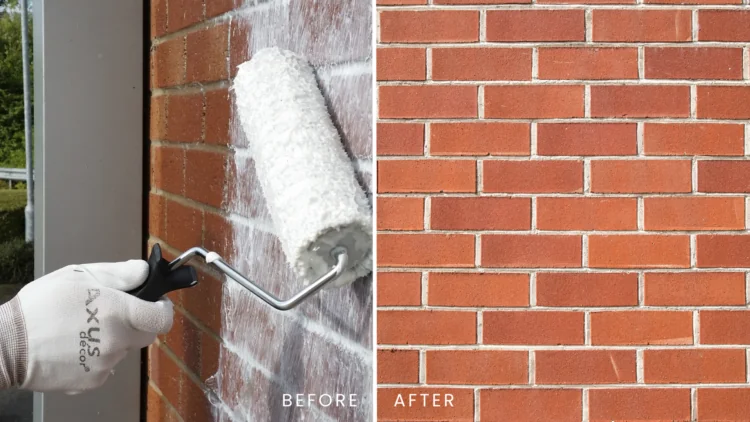
Both Emperor Masonry Paint and Emperor Masonry Creme have been independently tested to withstand harsh weather conditions for a minimum of 25 years. In fact, we are so confident they will far exceed this that we offer a lifetime guarantee.
Frequently Asked Questions
Q. CAN I USE BASECOAT ON BARE MASONRY?
Emperor Textured Basecoat is only recommended for when you are planning to paint the surface and need to match an existing textured finish with the repairs. If you have a bare masonry wall that you are repairing, Emperor Textured Basecoat isn’t suitable.
Q. WHY IS EMPEROR MASONRY PAINT AND MASONRY CREME SO DURABLE?
Masonry paint and other masonry treatments such as brick sealers eventually fail in most cases due to moisture. Water gets into the wall and becomes trapped, causing the treatment to bubble and begin to peel.
Our treatments aren’t like others – they chemically bond to the substrate itself to create an extremely strong bond. They also prevent a build-up of moisture thanks to both our super hydrophobic and highly breathable formulation. All of this combines to create extreme durability in any weather conditions.
We hope we have answered any questions you may have had regarding cracked walls and how to repair them. If you have any other questions our team of experts are on hand to assist you no matter your problem. Contact them today by emailing [email protected] or calling 01254 936121. Alternatively, shop our range of cutting-edge masonry products today and get free delivery on all orders.


